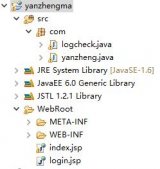前言
java有八个基本数据类型,每个都有对应的一个包装类,比如int对应的integer。 integer 是int的包装类型,数据类型是类,初值为null,从jdk1.5开始,java引入了自动拆装箱,可以直接进行形如integer i = 20形式的赋值,编译器会自动将其转换为integer i = integer.valueof(20)进行装箱,拆箱则是将int j = i的形式转换成了int j = i.intvalue() 。
装箱有个细节,如果不注意很容易出错,来看一下:
|
1
2
3
4
|
integer i = 20;integer j = integer.valueof(20);system.out.println(i == j); |
上面的代码输出为
true
好像没什么问题,那我们形式不变,将数字20换成200,即
|
1
2
3
4
|
i = 200;j = integer.valueof(200);system.out.println(i == j); |
同样的判断,输出变成了:
false
这是为什么呢?
先明确一点,经过编译器编译后,integer i = 20转换成了integer i = integer.valueof(20) ,和integer j = integer.valueof(20)的定义完全一样,那为什么将20换成了200后判断结果不一样了呢?
我们来看看integer.valueof(int i)方法的内部:
|
1
2
3
4
5
6
|
public static integer valueof(int i) { assert integercache.high >= 127; if (i >= integercache.low && i <= integercache.high) return integercache.cache[i + (-integercache.low)]; return new integer(i);} |
可以看出当i在某个区间内时,直接返回了缓存数组integercache.cache中的一个值,超出区间才new一个新的integer对象。到这里我们大概就可以得出结论:20在缓存范围内所以直接用了缓存,但是200超出了缓存区间所以new了新对象,和原来对象的地址当然不会相同,所以返回false
再来看看integercache,这是一个integer的私有静态内部类,定义如下:
|
1
2
3
4
5
6
7
8
9
10
11
12
13
14
15
16
17
18
19
20
21
22
23
24
25
26
|
private static class integercache { static final int low = -128; static final int high; static final integer cache[]; static { // high value may be configured by property int h = 127; string integercachehighpropvalue = sun.misc.vm.getsavedproperty("java.lang.integer.integercache.high"); if (integercachehighpropvalue != null) { int i = parseint(integercachehighpropvalue); i = math.max(i, 127); // maximum array size is integer.max_value h = math.min(i, integer.max_value - (-low)); } high = h; cache = new integer[(high - low) + 1]; int j = low; for(int k = 0; k < cache.length; k++) cache[k] = new integer(j++); } private integercache() {} } |
可以看出默认的缓存区间是-128~127,那么什么情况下会修改这个范围呢,修改了某个虚拟机参数的时候,通过代码也可看出,设置的这个缓存上限java.lang.integer.integercache.high值不能小于127,小于的话就会被赋予127,从而失效。
那么这个值怎么设置呢?我们来看看jdk源码中怎么解释integercache这个静态内部类:
cache to support the object identity semantics of autoboxing for values between -128 and 127 (inclusive) as required by jls. the cache is initialized on first usage. the size of the cache may be controlled by the -xx:autoboxcachemax= option. during vm initialization, java.lang.integer.integercache.high property may be set and saved in the private system properties in the sun.misc.vm class.
大概意思是:
将-128到127(包含)的数字做缓存以供自动装箱使用。缓存在第一次使用时被初始化。大小可以由jvm参数-xx:autoboxcachemax=option来指定。jvm初始化时此值被设置成java.lang.integer.integercache.high属性并作为私有的系统属性保存在sun.misc.vm.class中。
可以得到结论:这个缓存的high值是由jvm参数 -xx:autoboxcachemax= option来指定的。
上述jdk源码来源于jdk1.7,不同版本实现略有不同,但思路一致。
这种共享常用对象的思路有一个名字,叫享元模式,英文名叫flyweight,即共享的轻量级元素。其他包装类如boolean、byte、short、long、charactor都有类似的实现。
总结
以上就是这篇文章的全部内容了,希望本文的内容对大家的学习或者工作具有一定的参考学习价值,如果有疑问大家可以留言交流,谢谢大家对服务器之家的支持。
原文链接:https://www.cnblogs.com/JackPn/p/9392145.html
















